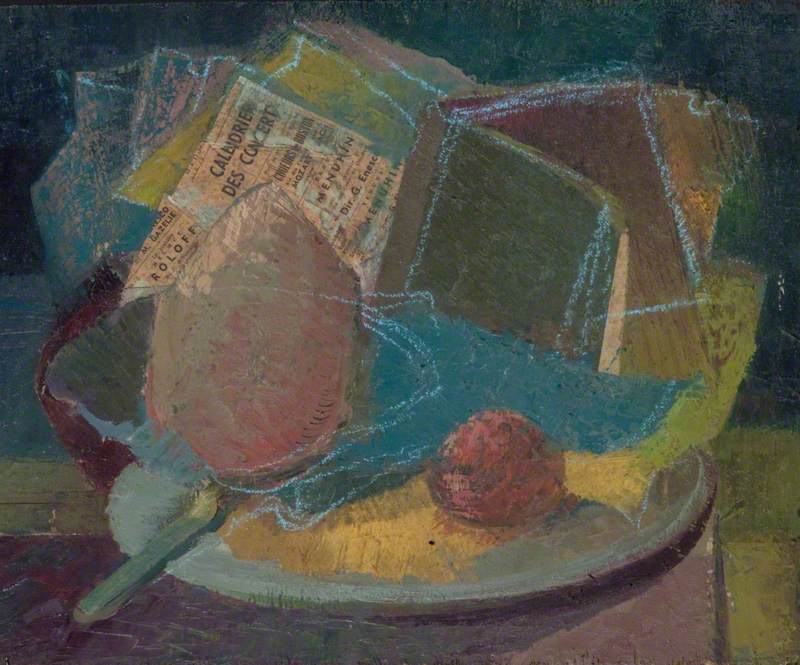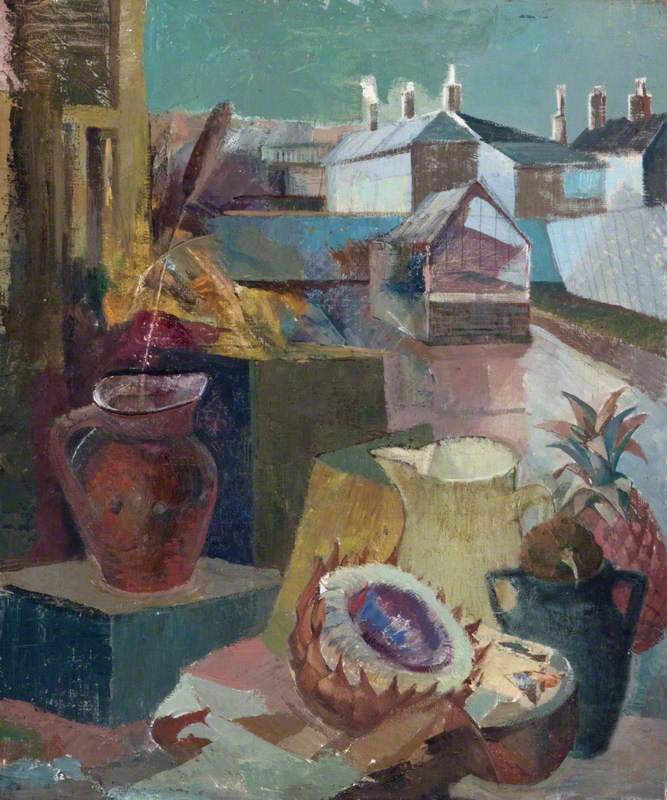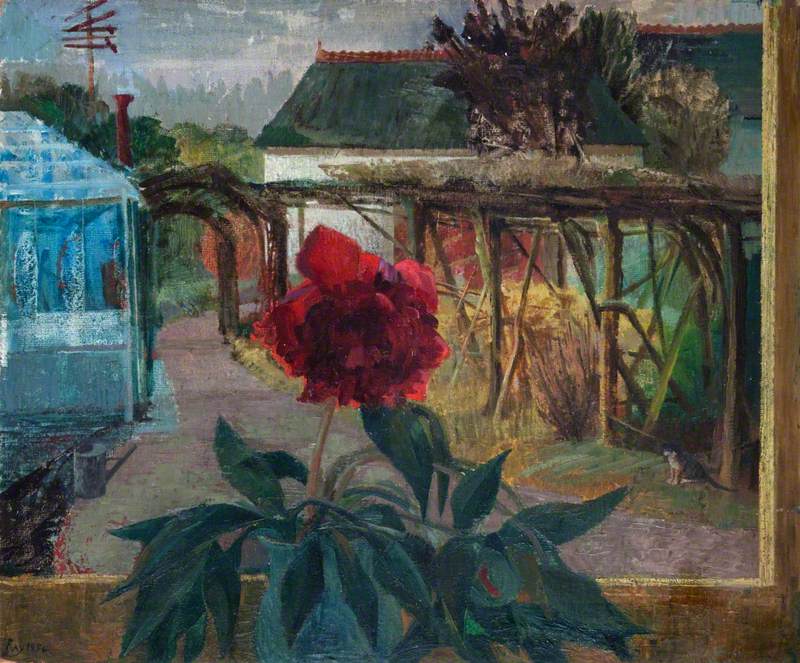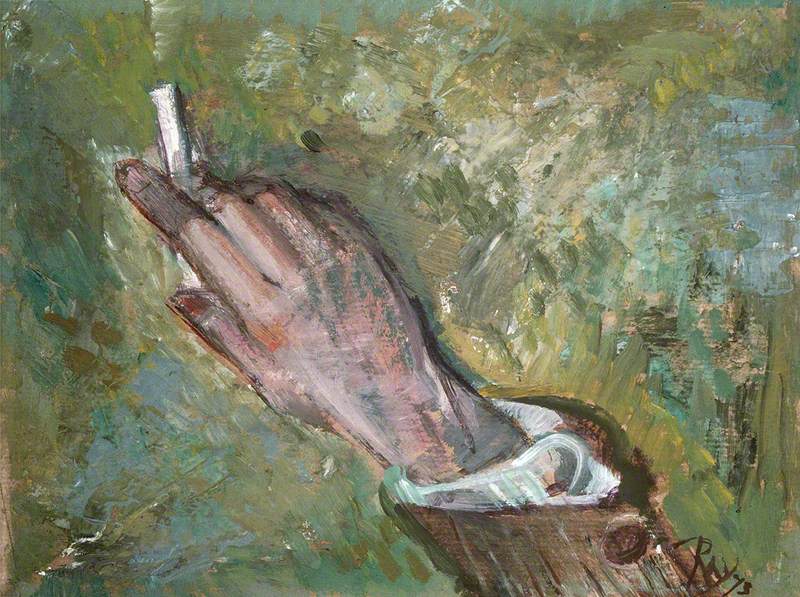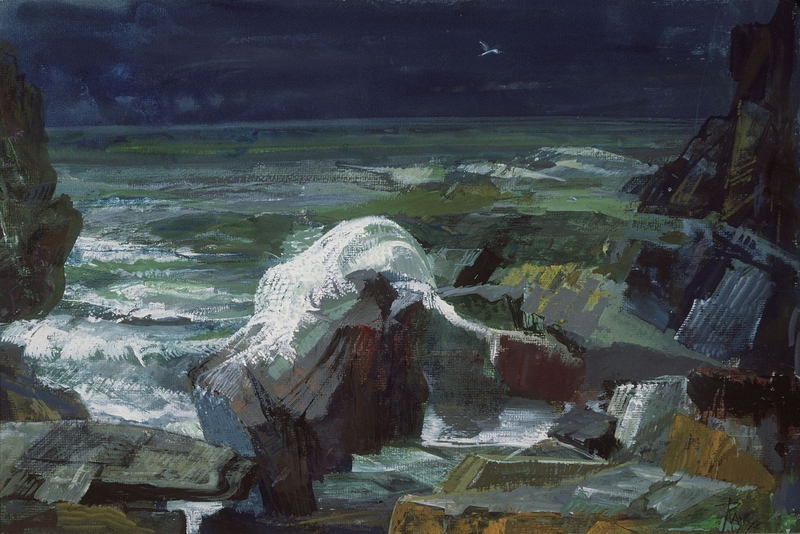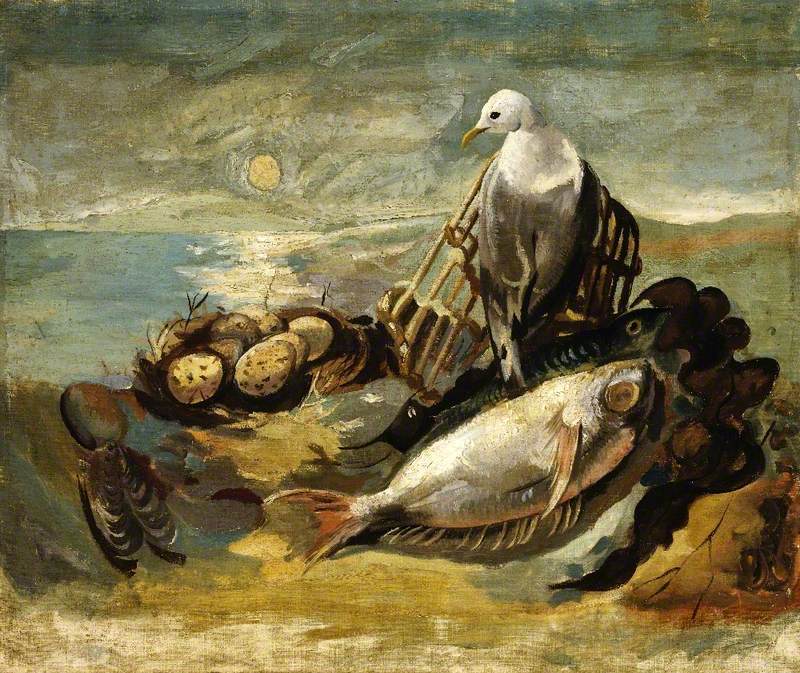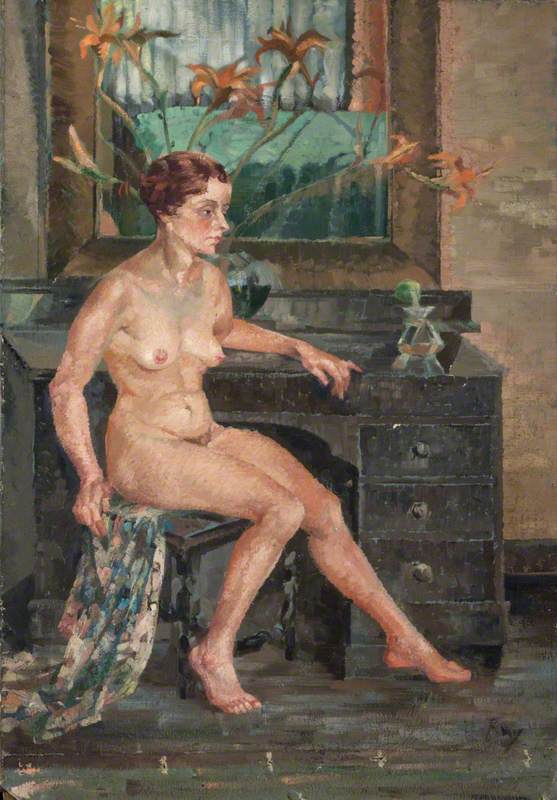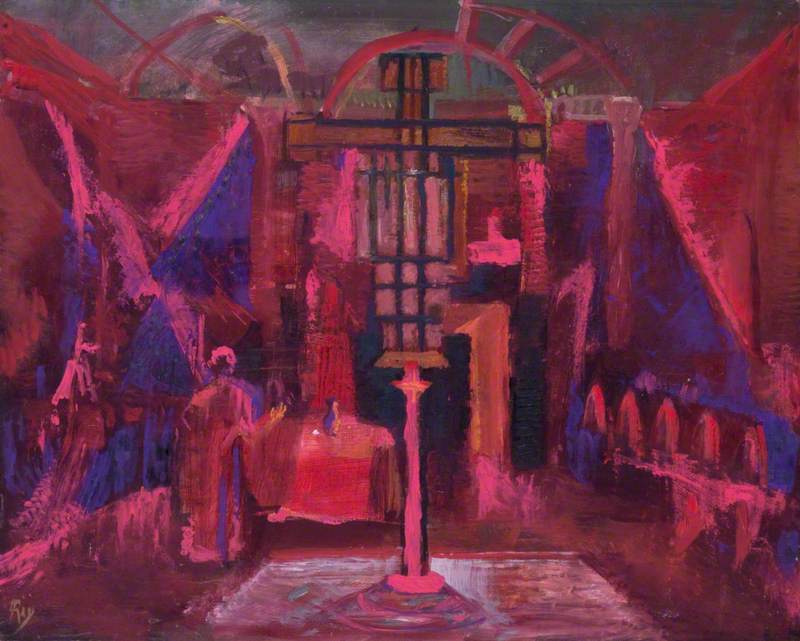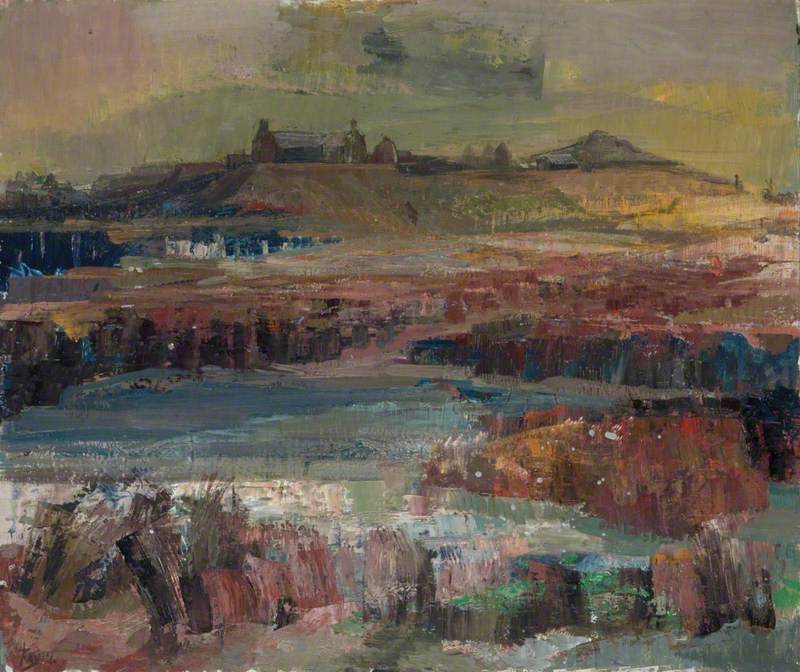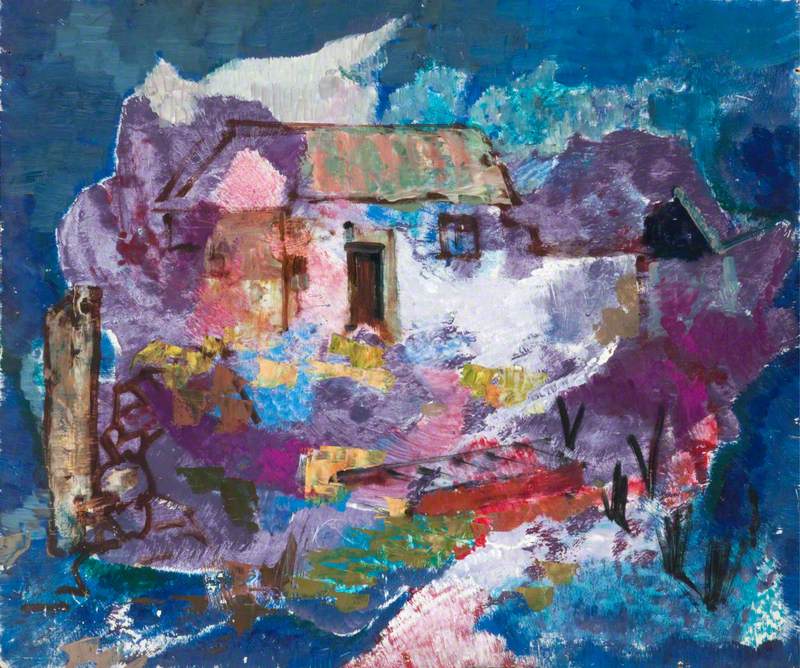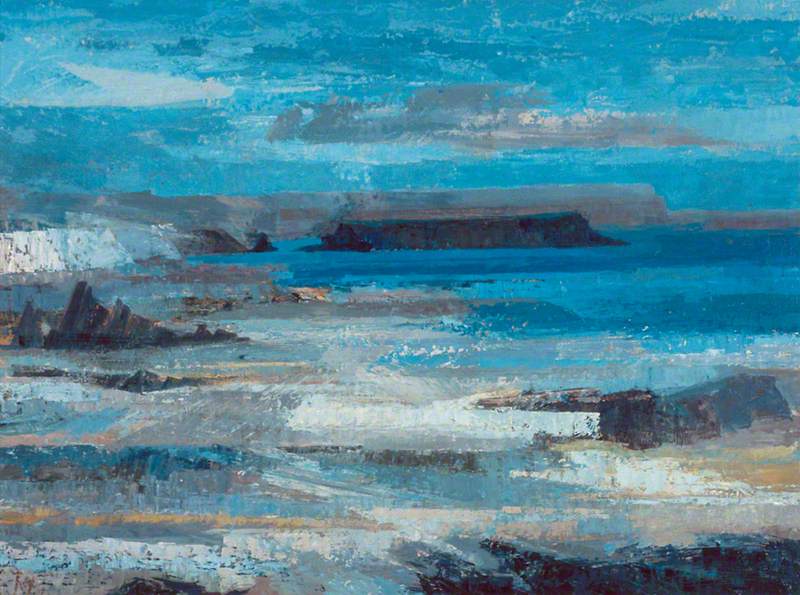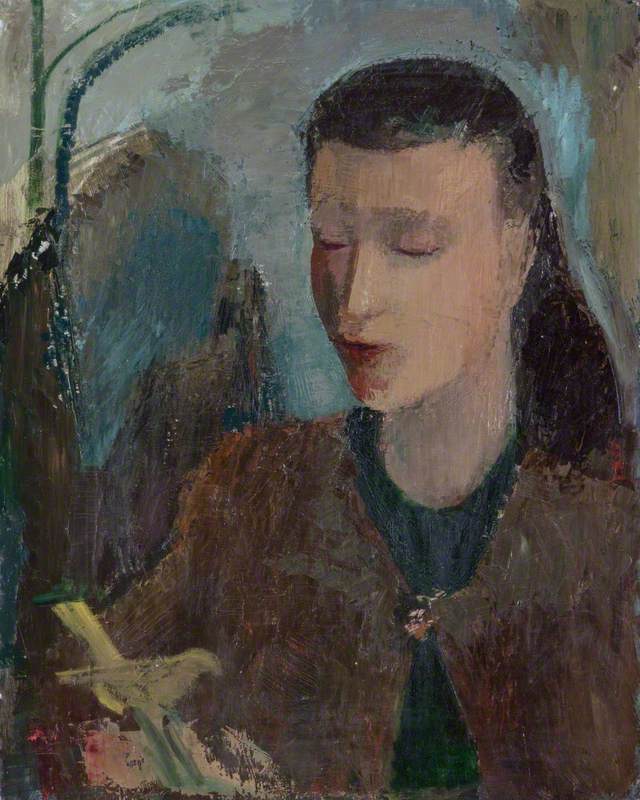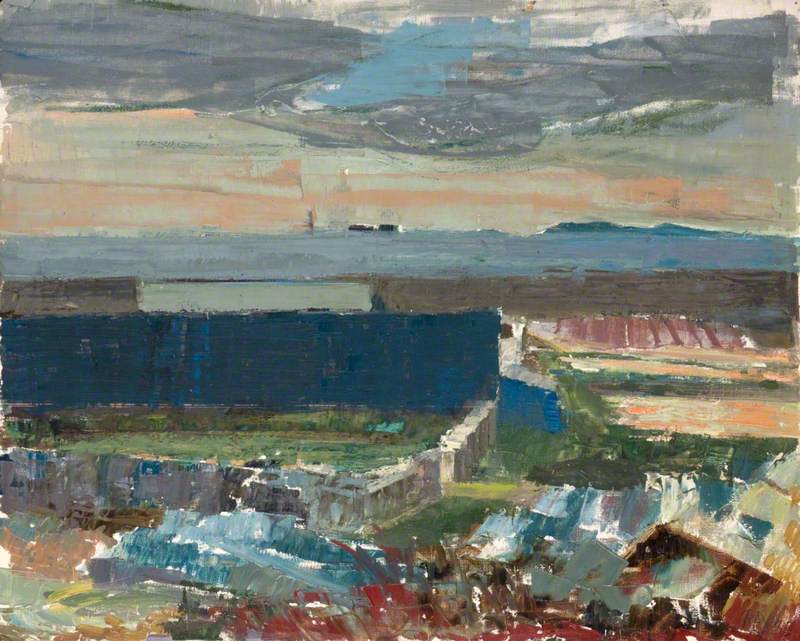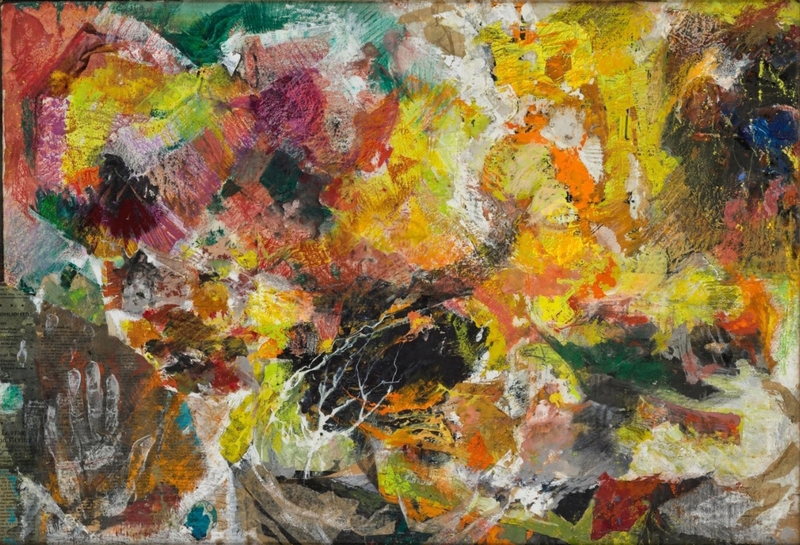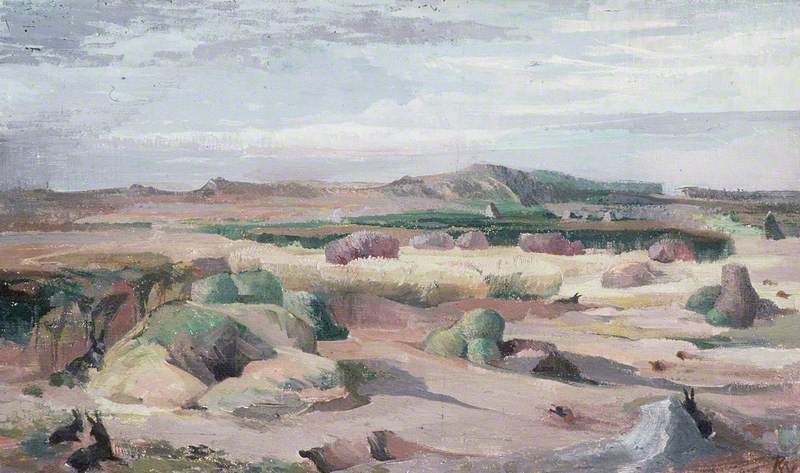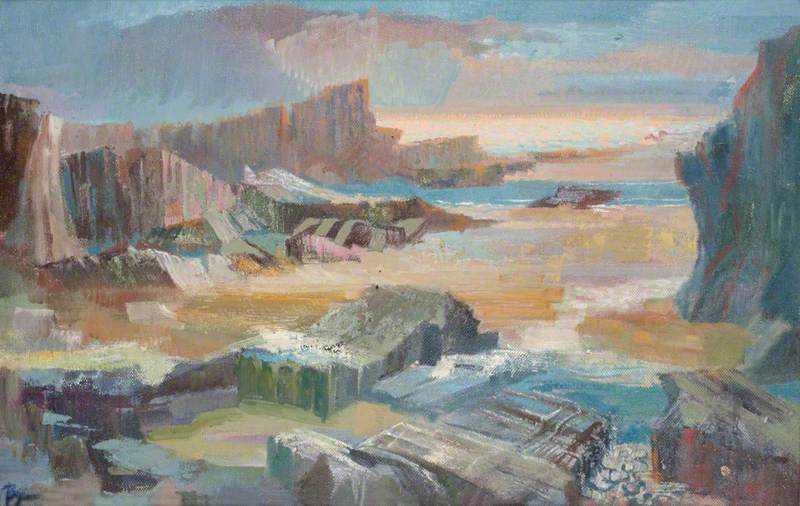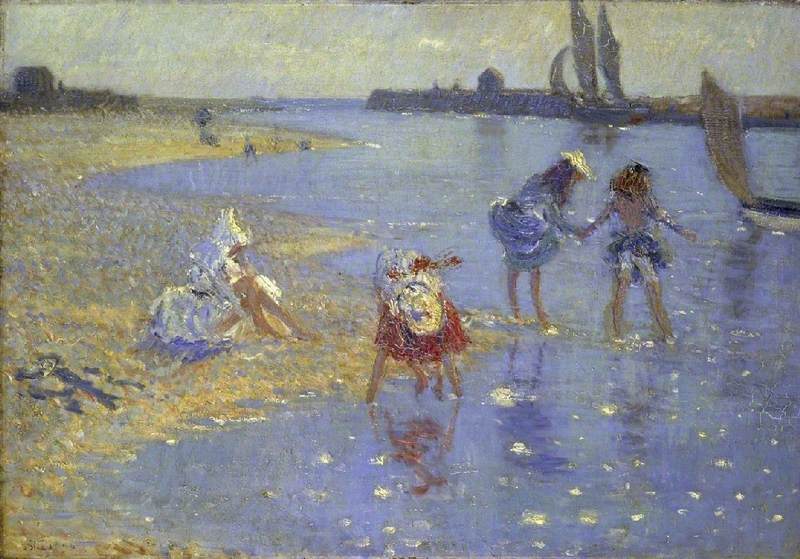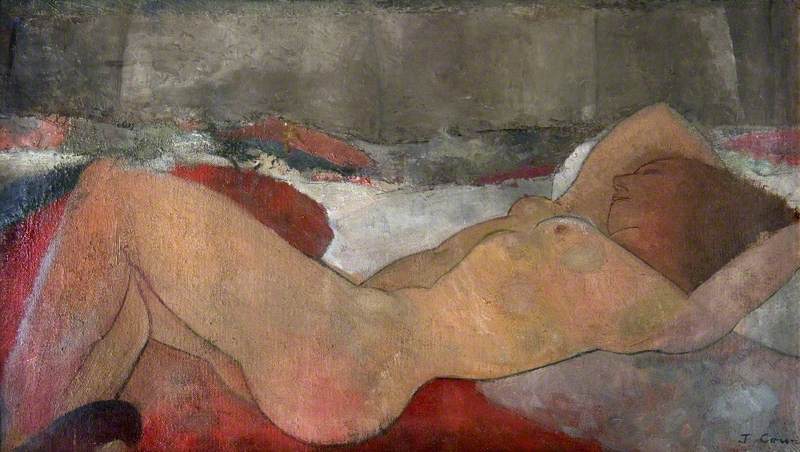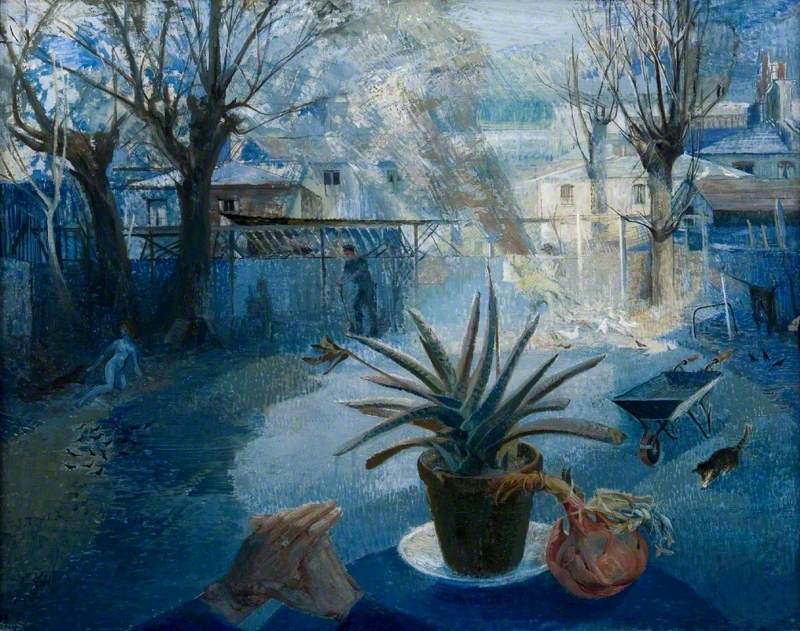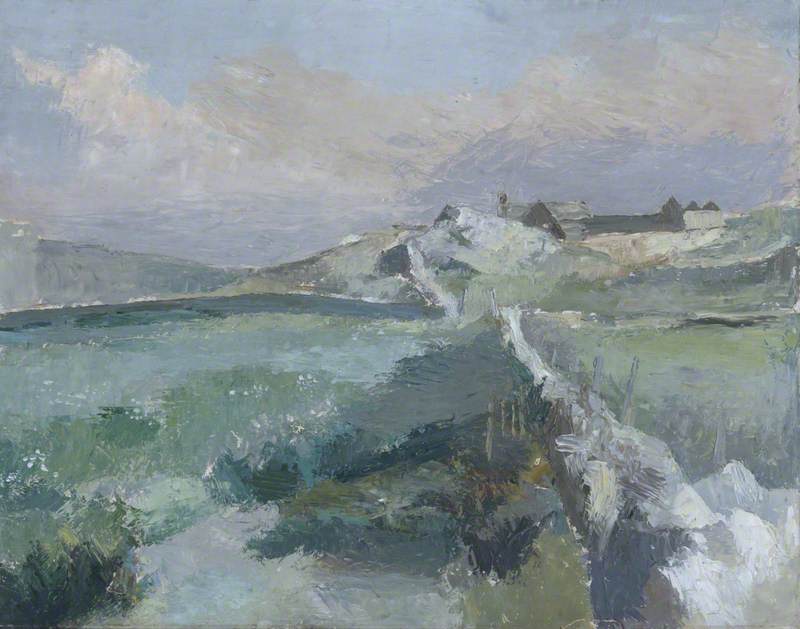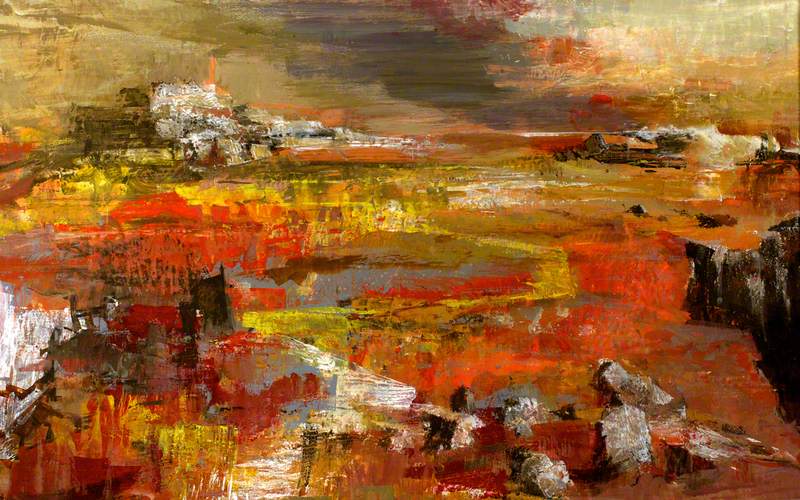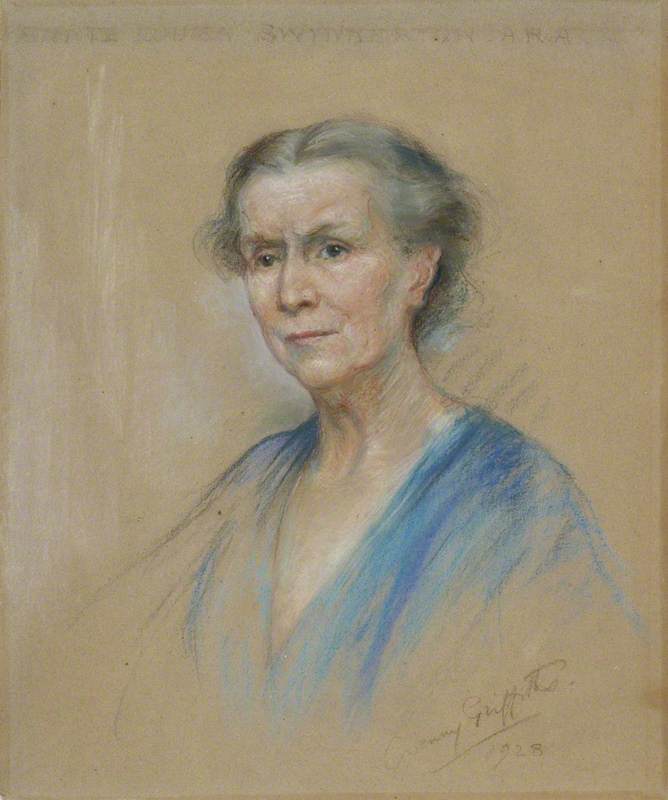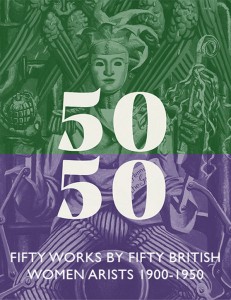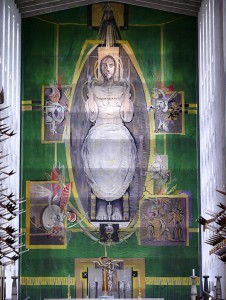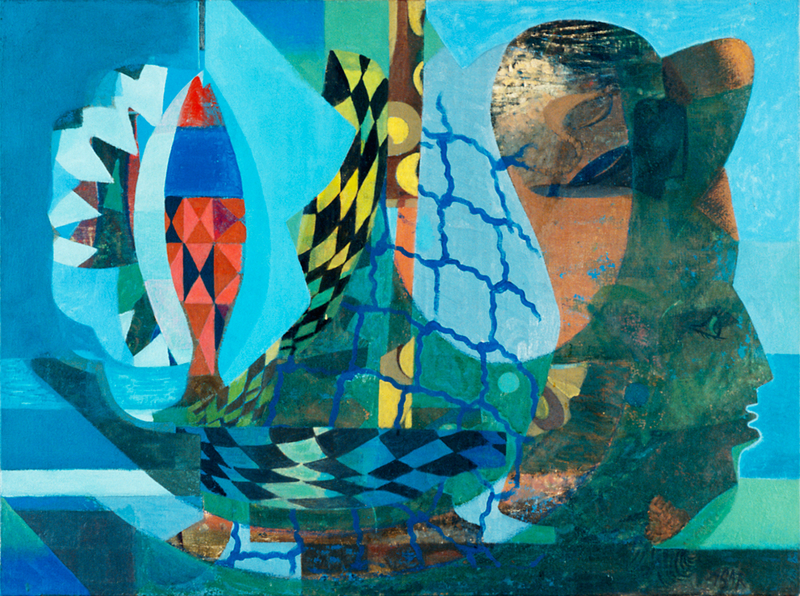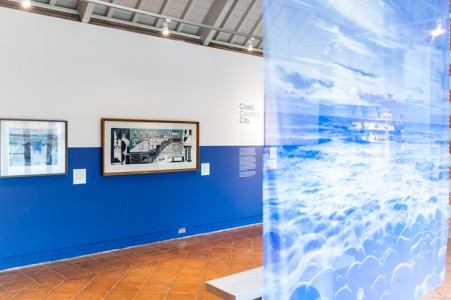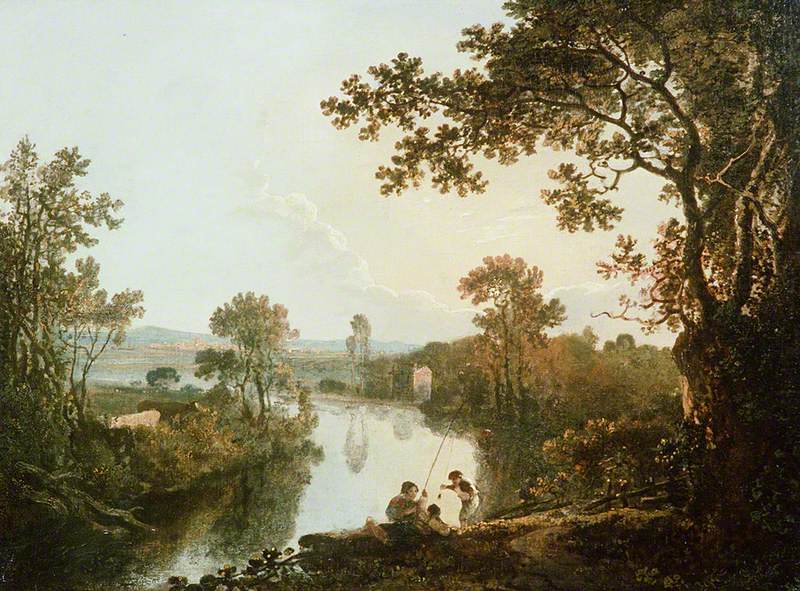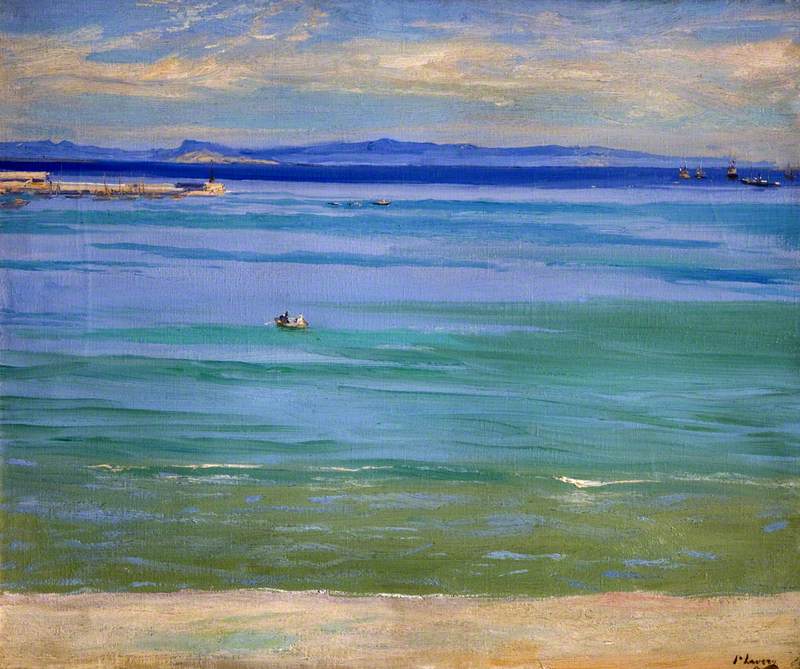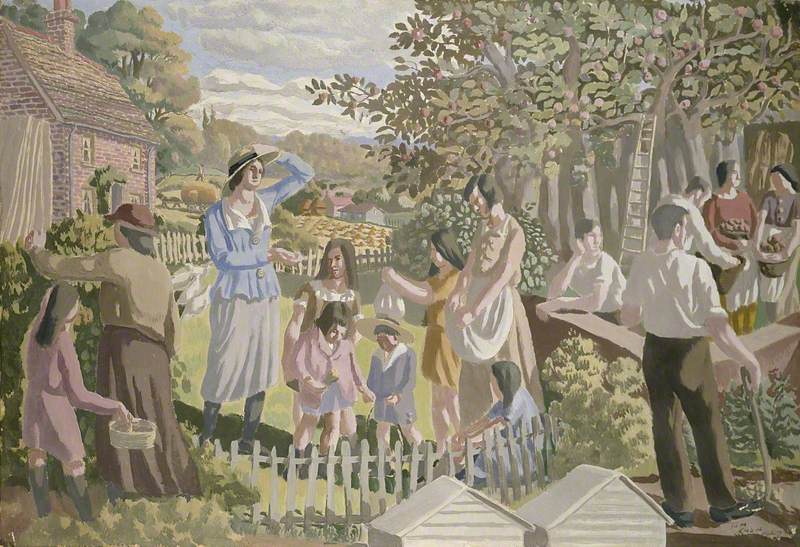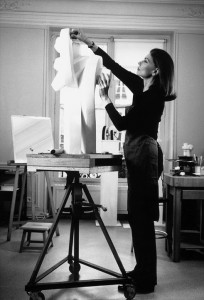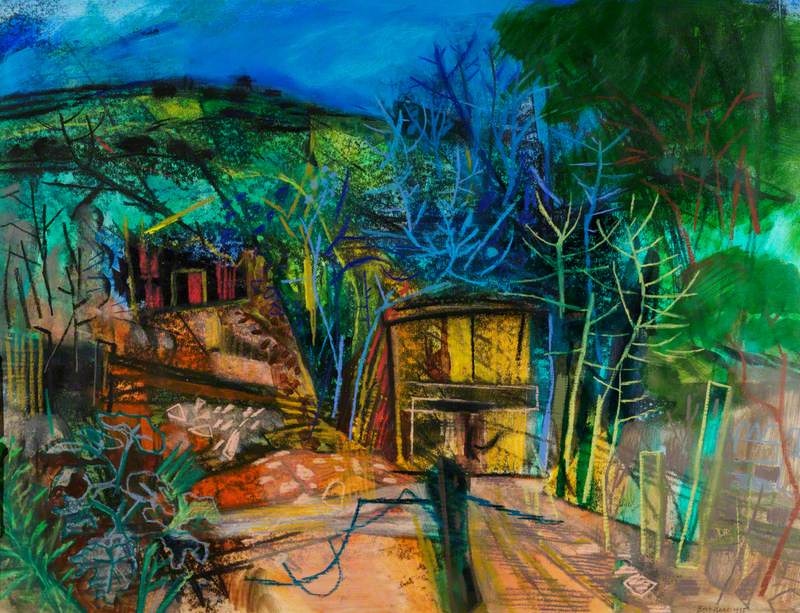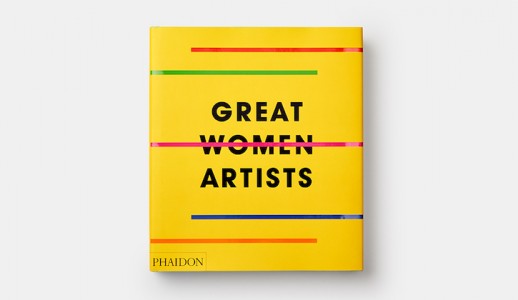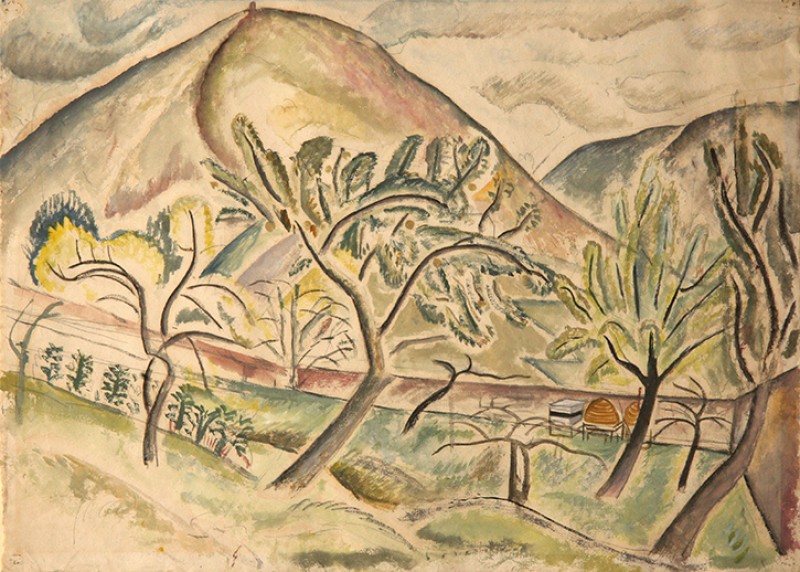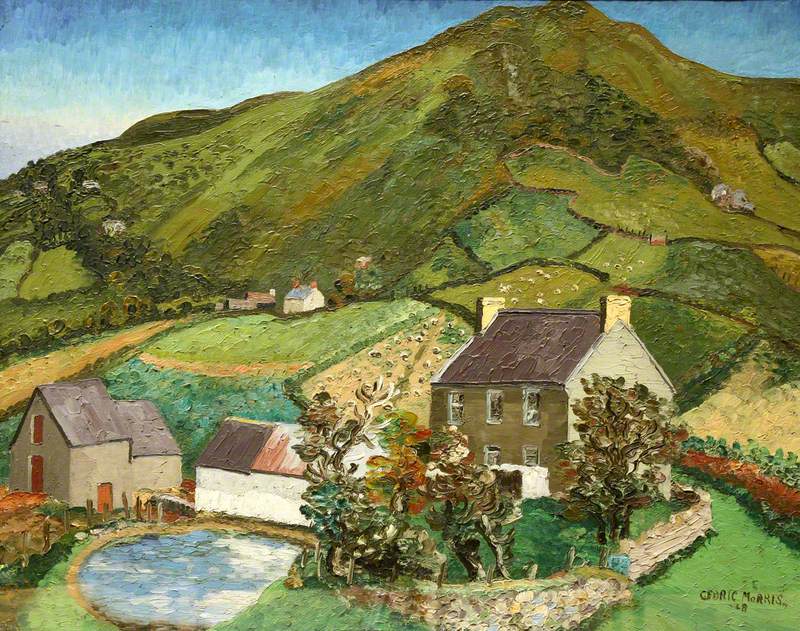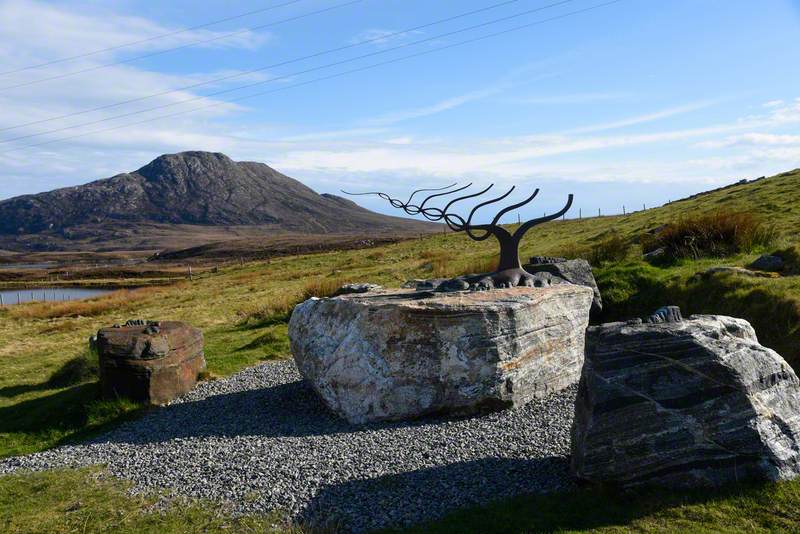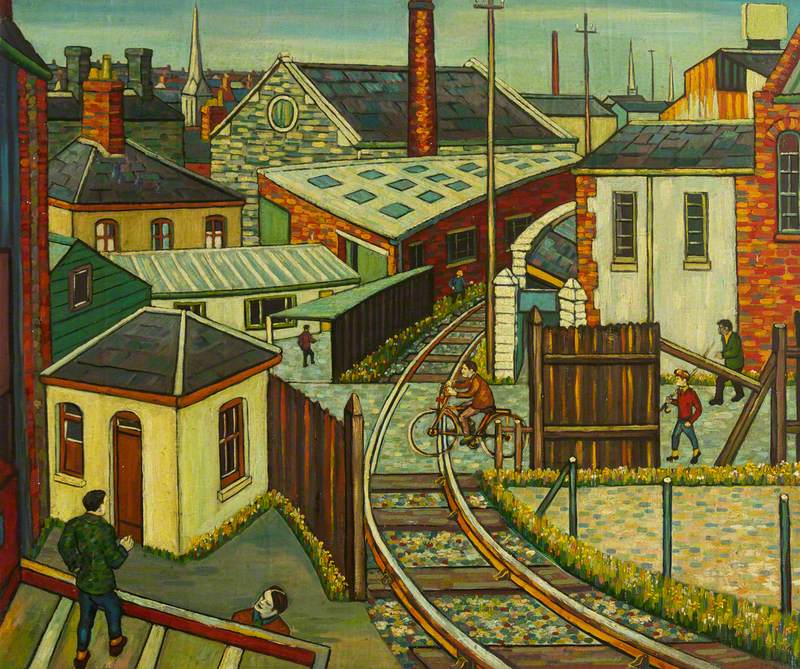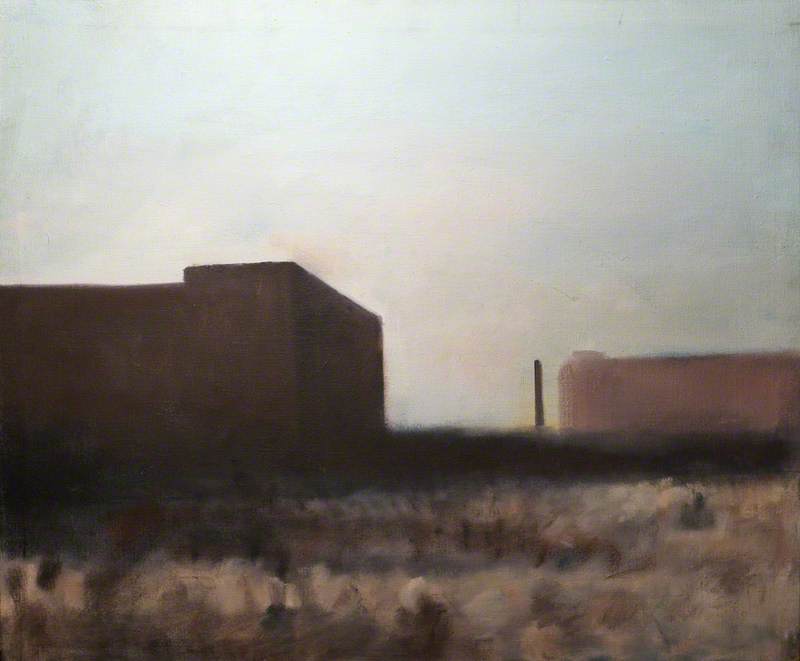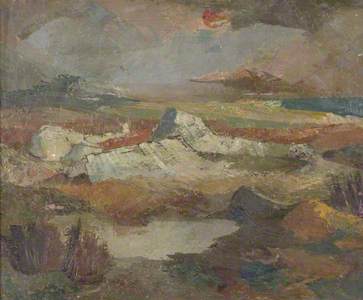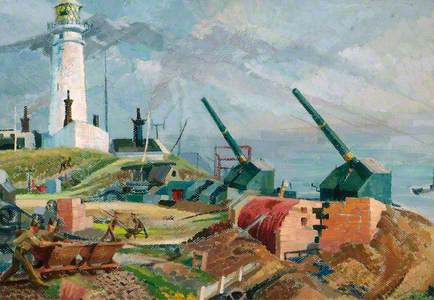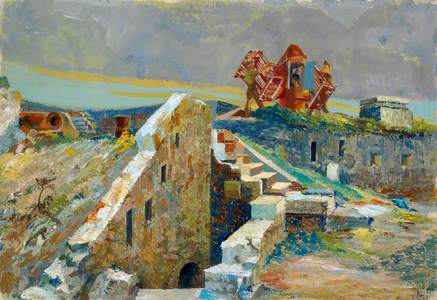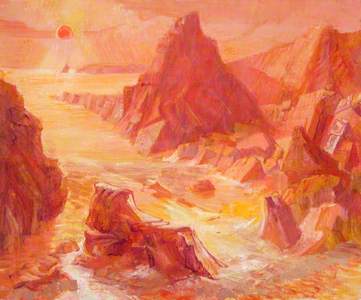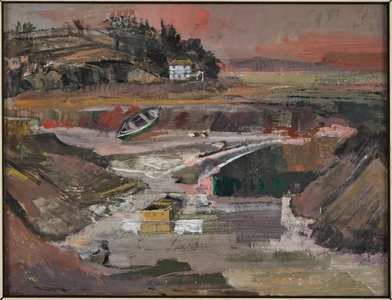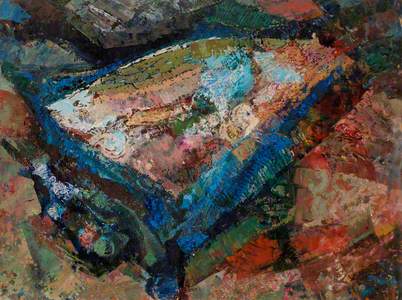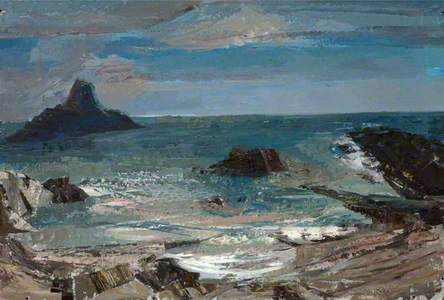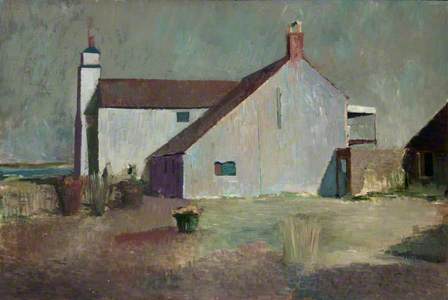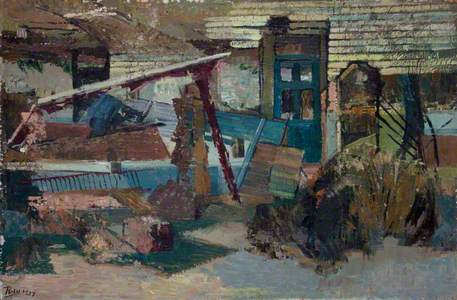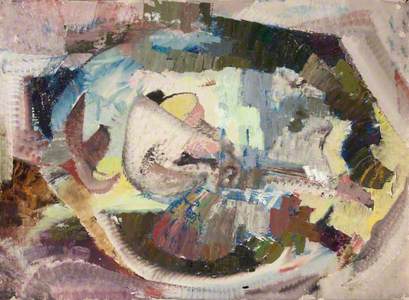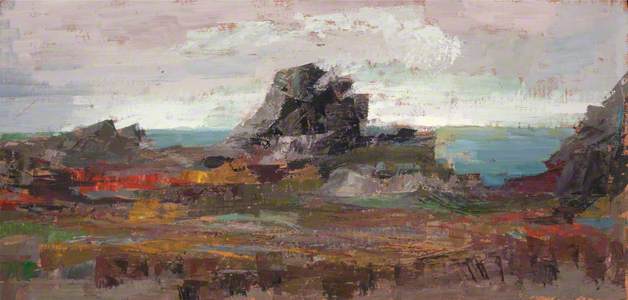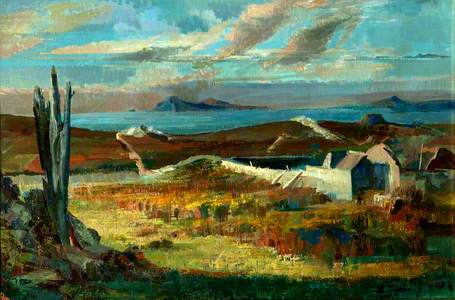Rosemary Howard-Jones, known by her professional name Ray, was a remarkably creative and driven Welsh Second World War artist. She was also a painter, mosaicist, community theatre pioneer, poet and Christian mystic,
Born in the same year as Graham Sutherland and John Piper, fellow neo-romantics who were also attracted to Pembrokeshire's dramatic coast, she – despite great talent and determination – rarely achieved their profile. Her consistently strongest paint mediums were watercolour and gouache, although her oils, which are mostly represented on Art UK, were often distinguished.
At the age of two, after her parents split up, Rosemary was brought up in an affluent and strict Edwardian Penarth household by her maternal grandfather. When he died she was cared for by her guardians in an Arts and Crafts house in another part of the town. Her creativity was recognised and encouraged at the progressive London Garden School from where, in the early 1920s aged 17, she secured a place at the Slade School of Fine Art. Here she was tutored by the formidable Henry Tonks as well as by impressionist Philip Wilson Steer and the Finnish art historian Tancred Borenius.
Her career as an artist, however, was severely impeded after contracting non-pulmonary tuberculosis. She endured life-threatening operations and long periods of recuperation. Not until 1935 did her career take off when, intriguingly, she adopted the name 'Ray' presumably in part to disguise her gender. At this time she was working at the National Museum of Wales as an archaeological illustrator while, in her spare time, becoming creative director and designer for the East Moor's Theatre in Splott, then a deprived district in Cardiff's docklands.
Fortified Islands (Building the North Battery, Flatholm, Bristol Channel)
1943
Ray Howard-Jones (1903–1996) 
As a member of a family with strong military links, Ray was determined to find a useful role by recording the impact of, and defences from, the Second World War. Penarth, being close to strategic docks, was heavily bombed. She had to work hard to obtain the necessary permits to draw and paint 'restricted subjects' and she made many paintings of barrage balloons, coastal look-outs, gun emplacements and military camps. She established a lively correspondence with Sir Kenneth Clark, director of the National Gallery and chair of the War Artists' Advisory Committee (WAAC). The committee acquired 15 of her works and commissioned her to record military installations and activities on the Bristol Channel Islands of Flat Holm and Steep Holm.
The WAAC committee also acquired Ray's paintings of merchant shipping preparing for D-Day in the south Wales ports and a portrait of her brother, then Brigadier Leonard Howard-Jones, who was involved in planning D-Day. Her war-time paintings, many of them gouaches, are held by the Imperial War Museum as well as being distributed widely around British public art collections.
After the war, Ray spent part of 1946 at the Scottish baronial mansion of Hospitalfield outside Arbroath. Here a handful of artists, mostly those who had recently attended Scottish art schools, were able to improve their skills from the tutelage of the warden-painter James Cowie. Having many interests in common, Ray and James were attracted to each other and even, to an extent, influenced each other's work, and this evolved into a love affair. In Glasgow Life Museums is a nude by Cowie of Ray and a later painting by Ray celebrating her debt to him.
Ray, who had stayed for periods in London during the war, settled there in 1947 with a studio by Hammersmith's Ravenscourt Park. The following year she met Raymond Moore, a mature graduate from the Royal College of Art, and this was the beginning of a two-decade creative partnership. By 1954 they had moved into a Victorian villa in nearby Ashchurch Park Villas which Ray kept until she died.
Ray and Raymond answered an advertisement to spend the summer of 1949 with the Codd family on their farm on the dramatic Pembrokeshire island of Skomer. The island's wild landscape and abundant wildlife – including seals, puffins and Manx shearwaters – would have a profound effect on them. The Pembrokeshire coast became the principal subject of Ray's deeply spiritual neo-romantic art and poetry, and the mainspring for Raymond's development as a prominent landscape photographer. They would spend nine summers on Skomer during the 1950s, largely facilitated by the support of the new absentee owner, the industrialist Leonard Lee.
During the 1960s they stayed in Lee's caravan on the Marloes mainland by the Deer Park gates, with immediate access to spectacular coastal scenery encompassing Marloes Sands and Martin's Haven. Ray's work became more expressive, more experimental and, at times, abstract and she held five successful shows with London's Leicester Galleries. After parting company from Raymond in 1971 she continued to stay in Marloes for several months each year until late in her life. She became a familiar figure sketching on the headland or wild swimming in her favourite bay.
The Shoreline at Deerpark, Marloes, Pembrokeshire
1970
Ray Howard-Jones (1903–1996) 
Remarkably, Ray was also an accomplished mosaic artist. Her 1958 design, An Eye for the People, won a national competition for a three-storey mural on the new Cardiff headquarters of the Western Mail. As the Twentieth Century Society were about to declare it as one of the outstanding British post-war murals, it was demolished, unprotected, in 2008. Fortunately, an intricately designed 1965 altarpiece commemorating Ray's college friend, Elfrida Tindal, still survives in the Edinburgh church of Marchmont St Giles.
The Unprisoned Splendour: Holy, Holy, Holy
1983
Ray Howard-Jones (1903–1996) 
Any appreciation of Ray Howard-Jones must account for her deeply held Christian faith and sacramental approach to work. In this, she had much in common with her friend the painter-poet David Jones. In later life, Ray became an oblate of the Benedictine Abbey of Nashdom in Buckinghamshire. Her constant desire – through drawing, painting and poetry – to understand, and become closer to, the natural world was inextricably bound to her Christian faith. She died in 1996 aged 93 and, intriguingly, her ashes are interred in Penarth Cemetery with her mother, sister and guardian aunt.
David Moore, writer, researcher and independent curator
This content was supported by Welsh Government funding
Further reading
David Moore, Ray Howard-Jones: My Hand is the Voice of the Sea, Bird Eye Books, 2023
David Stephenson & Lottie Hoare, 'Obituary: Ray Howard-Jones', The Independent, 1996

